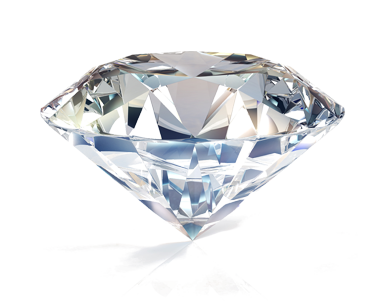Reading Diamond Certs : Measurements
The Measurements of a diamond are primarily used for identification purposes, since no two diamonds are exactly alike in weight, quality and measurements together.
Example :: 6.23 x 6.20 x 3.84 mm
But these three numbers can also be used to help you assess the Symmetry and the Length-to-Width Ratio, which affect beauty.
Measurements For Fancy Shapes
To figure the length-to-width ratio of your fancy-shaped diamond:
Take the length of the diamond and divide by the width.
Example: If you have a pear shape diamond with a length of 7.5 mm and a width of 5.0 mm — divide 7.5 over 5.0, and you get 1.50. This means you have a 1.50 : 1 (pronounced: “1.50 to 1″) length-to-width ratio.
Given below are the length-to-width ratios for each shape that seem to appeal to the most people.
This information should only be used as a starting point in the hunt for your personal dream diamond. It would be a great mistake to stick to these ratios precisely, especially against your own personal preferences. It is our advice to start with these ratios for a reference, then look at other options to determine what you like best. Do not let anyone (or the information below) convince you to think differently. Always buy what you like best.
The following ratios seem to be most appealing ::
Pear Shape Cuts are most popular at:
Somewhere between a 1.50:1 and a 1.75:1 ratio
Example: 8 x 5 mm is a 1.6:1 ratio
Marquise Cuts are most popular at:
Somewhere between 1.80:1 and a 2.20:1 ratio
Example: 8 x 4 mm is a 2.00:1 ratio
Emerald Cuts are most popular at:
Somewhere between 1.30:1 and a 1.50:1 ratio
Example: 8 x 5.7 mm is a 1.40:1 ratio
Princess Cuts are most popular at:
Somewhere between 1.15:1 and a 1.00:1 ratio
Example: 8 x 7 mm is a 1.15:1 ratio
Radiant Cuts are most popular at:
Somewhere between 1.50:1 and a 1.75:1 ratio
Example: 8 x 4 mm is a 1.50:1 ratio
Heart Shape Cuts are most popular at:
Somewhere between 1.25:1 and a 1.50:1 ratio
Example: 8 x 4 mm is a 1.50:1 ratio
Oval Cuts are most popular at:
Somewhere between 1.30:1 and a 1.50:1 ratio
Example: 8 x 5.5 mm = 1.50:1 ratio
Hint:
Do not stick to these numbers too strictly or you will set yourself up for frustration and disappointment at a time when you should be focused on the thrill of love and happiness. Be easy, and create a range for yourself instead of any exact numbers.
Measurements For Round Brilliant Shapes
You might assume that round brilliant cut diamonds will not have more than one diameter… or will they?
Actually, perfection is impossible in cutting, so all rounds are given two diameters, plus a depth. The first two figures in the measurements of a round are the maximum and minimum diameters. These two diameters will always vary a little, but a fine cut will not vary much.
Example 1:
A round diamond with measurements of 6.67 x 6.65 x 4.01.
This means that the diameter varies by only 0.06 mm, which is quite acceptable for a 1-carat diamond as you will see in the following list.
Example 2:
A round diamond with measurements of 6.69 x 6.52 x 3.97.This means that the diameter varies by 0.17 mm, which is not acceptable for a 1-carat diamond.
This means the diamond is a little out of round, and might not have good Symmetry and Light Performance.
Below are my opinions of acceptable variances for rounds in the popular sizes. Numbers beyond these will affect prices, but only marginally, until the differences are about double these figures:
Carat Weight / Acceptable Variations
0.50 carat / 0.05 mm
0.60 carat / 0.06 mm
0.70 carat / 0.07 mm
0.80 carat / 0.08 mm
0.90 carat / 0.09 mm
1.00 carat / 0.10 mm
2.00 carat / 0.12 mm
3.00 carat / 0.14 mm
4.00 carat / 0.16 mm
5.00 carat / 0.17 mm

